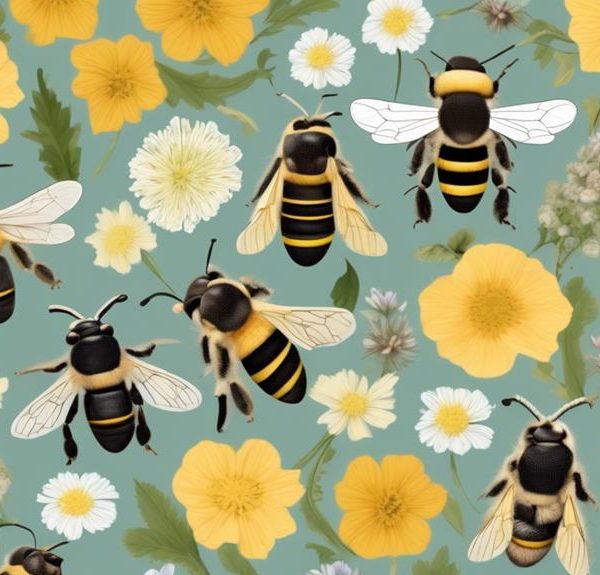Facing formidable foes, leafcutter bees wage a daily battle against devastating parasites; discover their struggle and the impact on their survival.
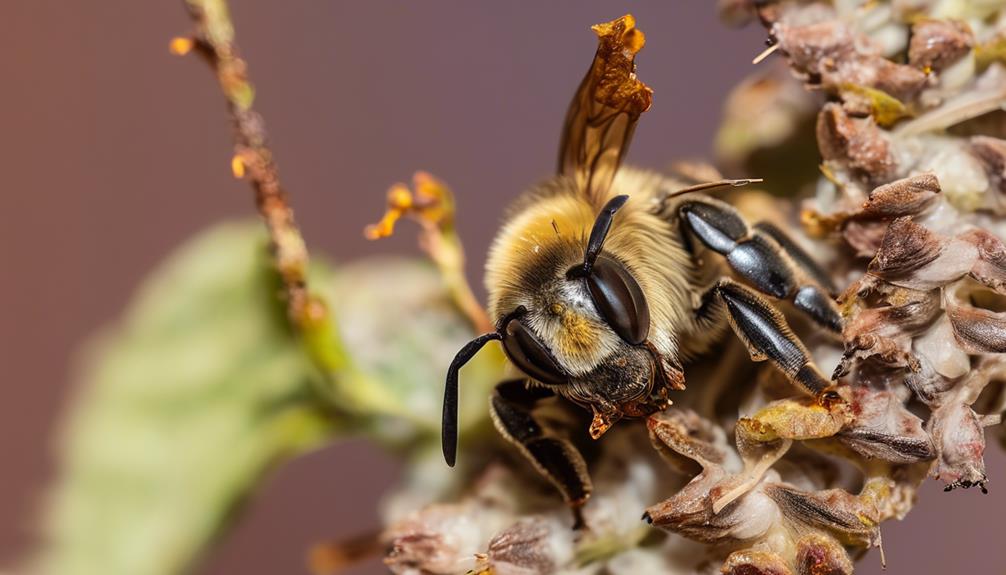
Leafcutter Bee Parasites
You've seen them buzzing in your garden, you've watched them carrying those tiny leaf fragments back to their nests, and you've marveled at their industrious nature. But have you ever wondered about the challenges leafcutter bees face every day?
One of these challenges – and perhaps the most destructive – is the presence of parasites. Just like any other living creature, leafcutter bees are not immune to the unwelcome advances of these dangerous freeloaders. These tiny invaders pose a serious threat to the survival and prosperity of leafcutter bee populations.
But what exactly are these parasites, how do they affect the bees, and most importantly, what can be done about it? As we venture further, we'll uncover these mysteries and more, shedding light on a topic that's crucial for the wellbeing of our tiny pollinator friends.
Key Takeaways
- Leafcutter bees are solitary creatures that construct their own nests in soft, rotting wood or plant stems.
- Female leafcutter bees lay eggs in a specific order, starting with female eggs.
- Common parasites in leafcutter bees include chalkbrood fungus, Varroa destructor, and tracheal mites.
- Parasites disrupt the bees' lifecycle, hinder their reproductive capabilities, and pose a significant threat to leafcutter bees and the broader ecosystem.
Understanding Leafcutter Bees
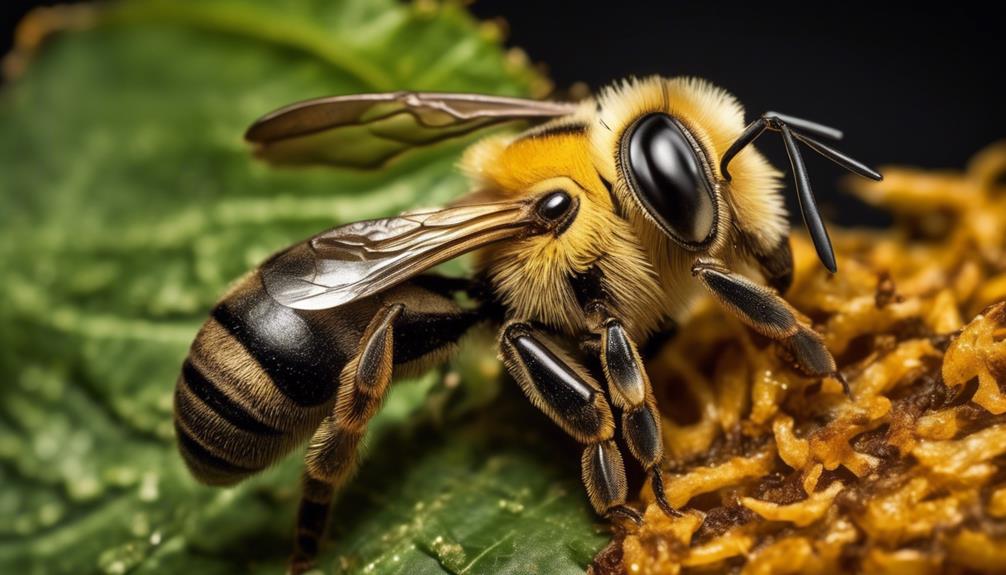
To truly grasp the intricacies of leafcutter bee parasites, it's essential to first understand the biology and behavior of leafcutter bees themselves. As a species of bee, leafcutters are solitary creatures, each female constructing her own nest. Typically, you'll find them in soft, rotting wood or in the stems of plants.
An interesting trait is their ability to cut leaves. They don't do this randomly, but rather as a critical part of their nesting process. Each female leafcutter bee cuts small circles from leaves, which she uses to build a tubular cell within her nest. It's in this cell that she lays her eggs, each surrounded by a food supply of pollen and nectar.
One must also consider their mating habits. After mating, a female leafcutter bee will lay her eggs, starting with a female egg, followed by several male eggs. This order is significant, as it has implications for the spread of parasites.
Understanding these aspects of leafcutter bee biology and behavior can give you insight into how parasites interact with and impact these bees.
Common Parasites in Leafcutter Bees

In your exploration of leafcutter bees, you'll find that these insects often fall prey to a variety of parasites, significantly affecting their behavior and lifecycle. These parasites can disrupt the bees' normal functions and can even lead to their death.
Below is a table highlighting three common parasites found in leafcutter bees:
Parasite | Effects on Bees | Treatment |
|---|---|---|
Chalkbrood Fungus | Causes larvae to harden and perish | No known cure |
Varroa Destructor | Weakens bees and spreads viruses | Various chemical and biological treatments available |
Tracheal Mites | Leads to respiratory distress | Use of formic acid treatments |
These parasites can cause serious harm to the bee populations. Chalkbrood fungus, for instance, makes the larvae brittle and ultimately kills them, with no known cure available. Varroa destructor is a mite that weakens the bees and spreads diseases, but treatments are available to combat this. Tracheal mites, on the other hand, cause respiratory issues in bees. Formic acid treatments can help control these parasites.
Impact of Parasites on Leafcutter Bees
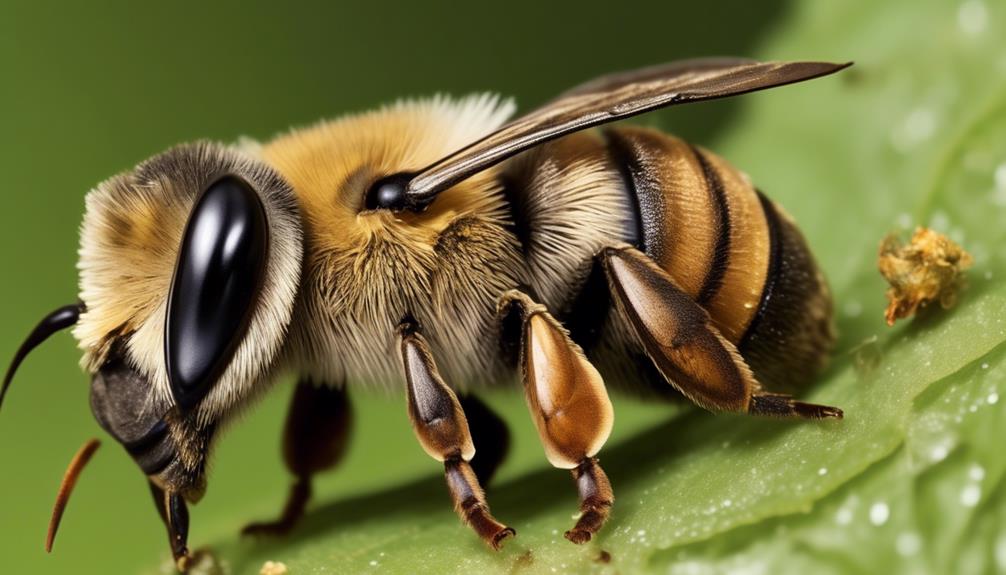
Without the shadow of a doubt, you'll find that the health and vitality of leafcutter bees are drastically undermined by the relentless onslaught of numerous parasites. These parasites, from mites to fungi, disrupt the bees' lifecycle, hinder their reproductive capabilities, and can even cause their premature death.
Let's delve into this issue more deeply. You'll notice that the most common parasite, the chalkbrood fungus, invades the larvae of the bees, causing them to harden and eventually perish. This not only reduces the bee population but also hampers the pollination process, which is crucial to our ecosystem.
Mites, another prevalent parasite, attach themselves to the bees, sucking their hemolymph and weakening them in the process. This degradation of their physical strength inhibits the bees from carrying out their routine tasks, such as leaf cutting and nest building. Consequently, the overall productivity of the colony diminishes.
Moreover, certain parasitic flies lay their eggs in the bees' nests. When the fly larvae hatch, they consume the bee larvae, further dwindling the bee population. In essence, parasites pose a significant threat to leafcutter bees, with implications for both the bees and our broader ecosystem.
Prevention and Control Measures
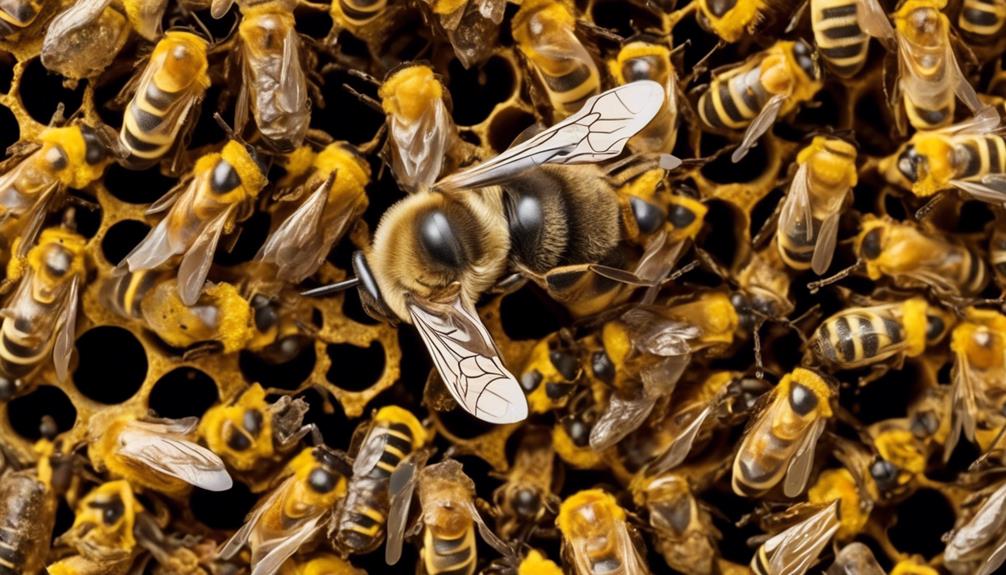
Given the severe implications of these parasitic invasions, it's crucial that you understand and implement effective prevention and control measures to safeguard the leafcutter bees and, subsequently, our ecosystem.
Firstly, regular monitoring is key. You must frequently inspect bee nests for signs of parasitic infestation. Secondly, consider introducing natural predators of these parasites into the environment. Certain bird and insect species can help control parasite populations. Lastly, maintaining clean, healthy habitats is vital. Parasites thrive in unsanitary conditions; thus, ensuring nests are clean can deter parasite growth.
To further emphasize, here's a table showcasing these methods:
Method | Action | Expected Result |
|---|---|---|
Regular Monitoring | Frequent inspection of bee nests | Early detection and treatment |
Natural Predators | Introduction of birds and insects | Control of parasite population |
Clean Habitats | Regular cleaning of nests | Deterrence of parasite growth |
Current Research and Future Prospects
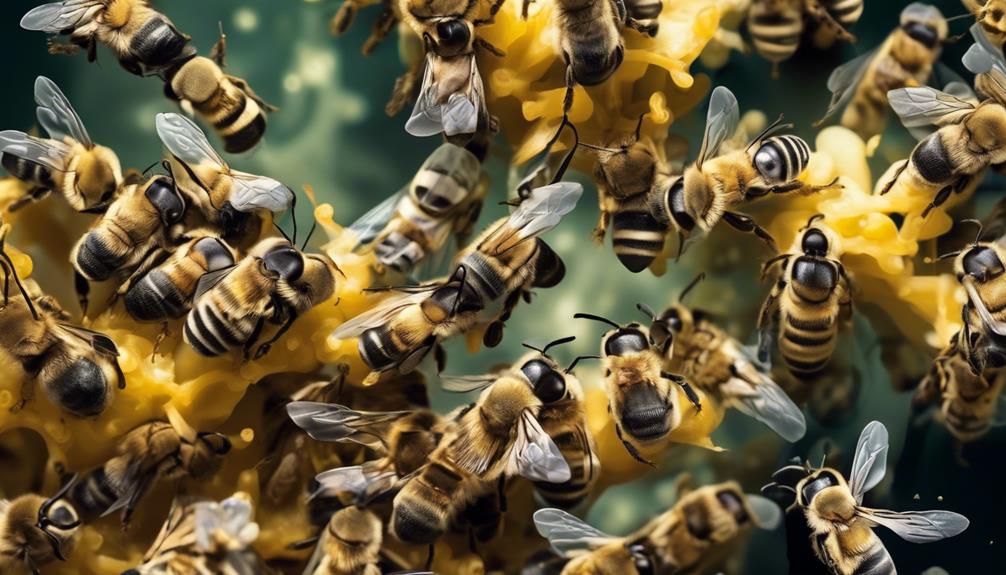
As you delve into the realm of ongoing research and potential future advancements, it's exciting to see the breadth of work currently being undertaken to combat leafcutter bee parasites. Scientists are focusing on improving biocontrol methods, with an eye toward developing safe, efficient, and eco-friendly parasite management strategies.
Key research is targeted at understanding the parasites' biology and life cycle, which can shed light on intervention points. For instance, innovative studies are exploring the use of entomopathogenic fungi to disrupt the life cycle of these parasites.
Promising future prospects lie in the field of genetic engineering. Scientists are investigating the possibility of altering the genes of leafcutter bees to make them resistant to these parasites. This cutting-edge research could potentially revolutionize the way we address the problem of leafcutter bee parasites.
However, these advancements aren't without challenges. Ethical considerations, feasibility, and potential environmental impacts have to be meticulously assessed before implementation. Therefore, it's crucial to continue supporting research in this field, as it holds the key to ensuring the survival and success of leafcutter bees, crucial pollinators in our ecosystem.
Conclusion
In conclusion, parasites can significantly affect leafcutter bees. They compromise the bees' health, disrupt their reproduction, and can decimate populations.
Thankfully, preventive measures and control techniques are available. Further research is crucial to develop more effective strategies against these parasites, ensuring the survival and prosperity of these invaluable pollinators.
Remember, maintaining the health of leafcutter bees is paramount for our ecosystems and agriculture.


